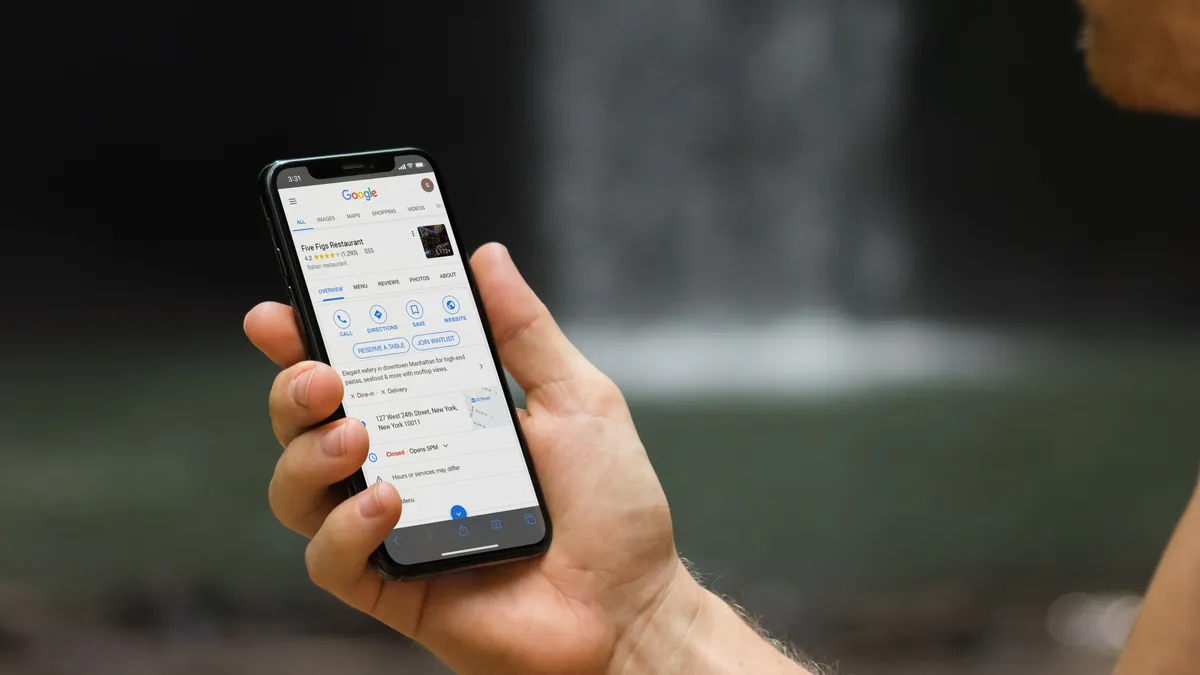Dive Brief:
- SevenRooms, a restaurant reservation and management platform, has integrated its waitlist product with Reserve with Google, the company announced Wednesday in a press release emailed to Restaurant Dive. The integration allows guests to add themselves to a waitlist online from home via the restaurant's chosen channels, where they can view real-time wait estimates.
- Guests are sent a text message when they are close to the top of the waitlist and can check in virtually via that same text when they arrive at the restaurant, ensuring a contactless experience. SevenRooms also expanded its waitlist with new digital booking channels through Google Search, Maps and Assistant.
- Google has been entrenching itself in diners' restaurant discovery process through deals like this one, as well as new app features. In April, the company rolled out an app feature that shows which restaurants offer delivery and takeout, and directs consumers to the restaurant's website instead of third-party platforms. Last fall, online food ordering platform Olo integrated with Google so customers can order via Google Search, Maps and Assistant.
Dive Insight:
This integration could help restaurants take more control of the diner journey, removing the friction of an additional search step for those seeking reservations. The Google platform is a good place to start. Google has the most market share for both mobile and desktop search, and by integrating with its mobile features like Maps, this partnership also taps into the vast number of online searches for restaurants (72%) done via a mobile device.
Integrations like this seem to be growing in popularity as more consumers intuitively head straight to Google for restaurant discovery, and Reserve already has a large number of partners in its portfolio, including Bookatable, easyTableBooking and Resy.
SevenRooms touts that restaurants could benefit from its partnership because businesses can help maintain control of customer data, like email addresses and phone numbers, for targeted marketing campaigns. Providing more accurate reservation times for guests could reduce the number of abandoned reservations as well, which can be a major profit loss driver.
The feature also caters to increased diner demand for safety and social distancing amid the pandemic, as it allows customers to get on a waitlist from a remote location and check in without having to linger near a host stand or lobby area.
Amid the pandemic, reservations platforms have diversified their offerings to help both restaurants and customers who have had to shift their dining out routines. Resy, for example, has added both a mobile waitlist and capacity monitor. OpenTable already offered virtual waitlists prior to the pandemic, but has expanded its reservations to wineries, bars and breweries.
Still, reservation platforms have taken a hit as their adjacent restaurant partners struggle amid COVID-19 restrictions. In Q1, OpenTable parent Booking Holdings' total revenue dropped 19%, for example. That diversification and innovation will have to continue among these platforms in order to recover. Resy’s fine dining “drive-thru” experience is a good example of this. And restaurant reservations could pick up sooner than later as more consumers get comfortable dining out but capacity remains a fraction of full in many locations.









